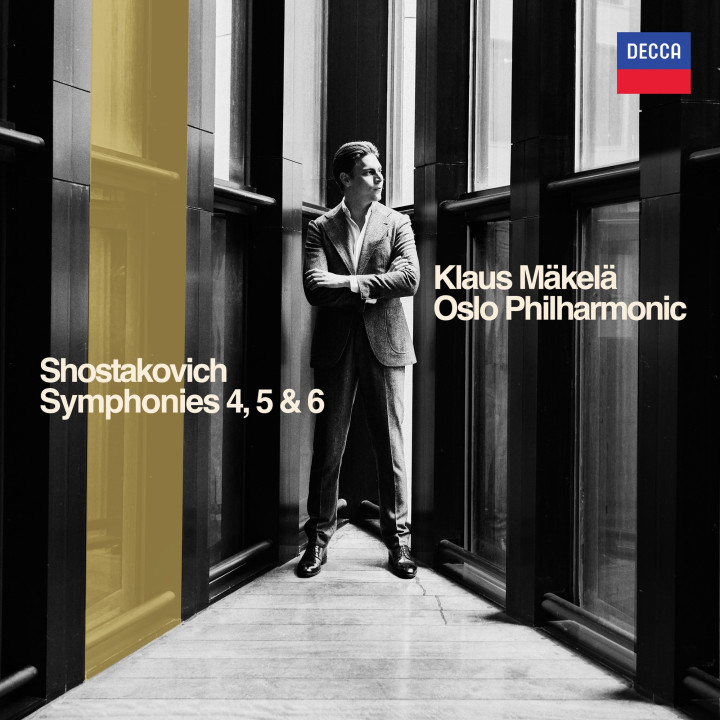

Symphony No. 4 in C minor, Op. 43 Symphony No. 5 in D minor, Op. 47 Symphony No. 6 in B minor, Op. 54
How do you take your Shostakovich? Black, strong and full-bodied, or with lots of cream and sugar. How about a bit of cinnamon sprinkled on top. Or are you the type who takes a prosaic approach yet partakes in the best of both worlds. This new recording of three iconic symphonies by Dmitri Shostakovich (1906-1975) performed by the Oslo Philharmonic under the direction of Finnish conductor Klaus Mäkelä may very well be your cup of coffee.
In order to avoid having to go into lenghty details about all three, I will focus my remarks on the Symphony No. 6 in B minor which, in my opinion, is perfectly captured and projected in this stellar interpretation. Its long, slow and mysterious first movement is one of the most typical and memorable Shostakovich statements. Most of it is scored for a couple of woodwind instruments that seem to be involved in a secret, late night conversation, against a backdrop of extremely soft shimmering strings. Everything is hushed, as if the conversation must not be heard by whoever else is listening in the darkness. This overall mood of secrecy and contempt being covertly monitored by the Soviet regime is the essence of this work, and Mäkelä conveys this extremely well. Its "Rossini meets Circus Music" final Presto movement, with its clownish buffoonery coda, is also very effective here.
The late 70s Bernstein/New York Phil live in Tokyo account of the Symphony No. 5 on Sony may be more emotively intense, especially its darker hued slow movement, but Mäkelä brings out the work's more expressive and lyrical moments very well. And for those of you who care about such things, Klaus Mäkelä belongs in the 'slow' camp concerning the final movement's coda, and actually delivers a convincing validation for that side of the argument. Based on what I hear, I would assume that Mäkelä concerns himself more with the music's aesthetics rather than its abstract manifestation.
With that said, the Presto segment of the Symphony No. 4's opening movement, with the collossal 4-part fugue for strings, is rather disappointing here. If you want to hear one that will blow your socks off, may I suggest you acquire the recording conducted by Daniel Raiskin. It will make you want to run for cover. But I will say that the final crucial five minutes of this symphony is where Mäkelä and the Oslo Phil musicians totally expiate themselves. I've never heard this enigmatic ending, with the throbbing heartbeat in the lower strings, rendered so effectively. Mysterious, disquieting, imponderable, are but some of its effects lingering on the mind long after audition.
Jean-Yves Duperron - August 2024 Symphony No. 6 - Final Movement Ending